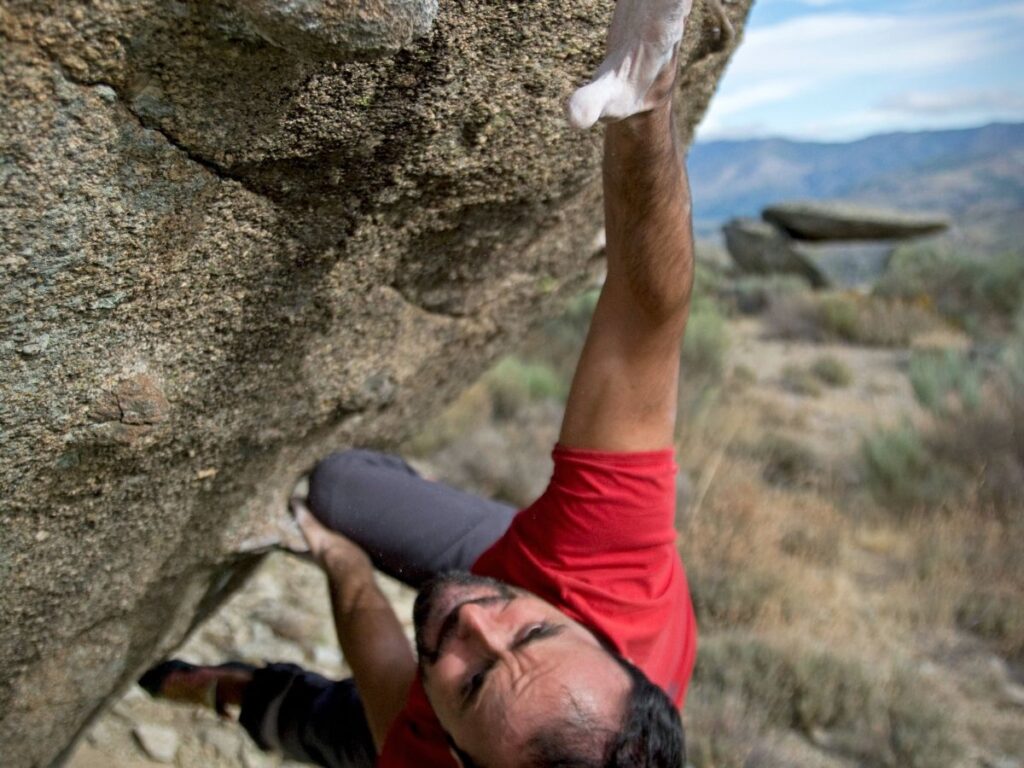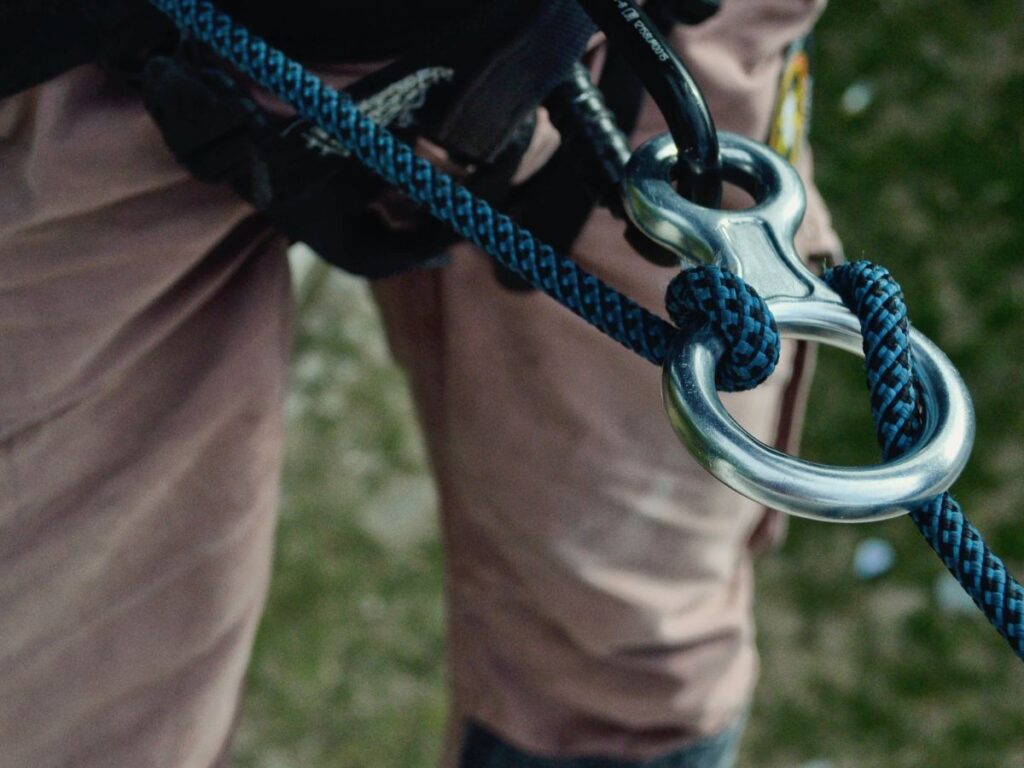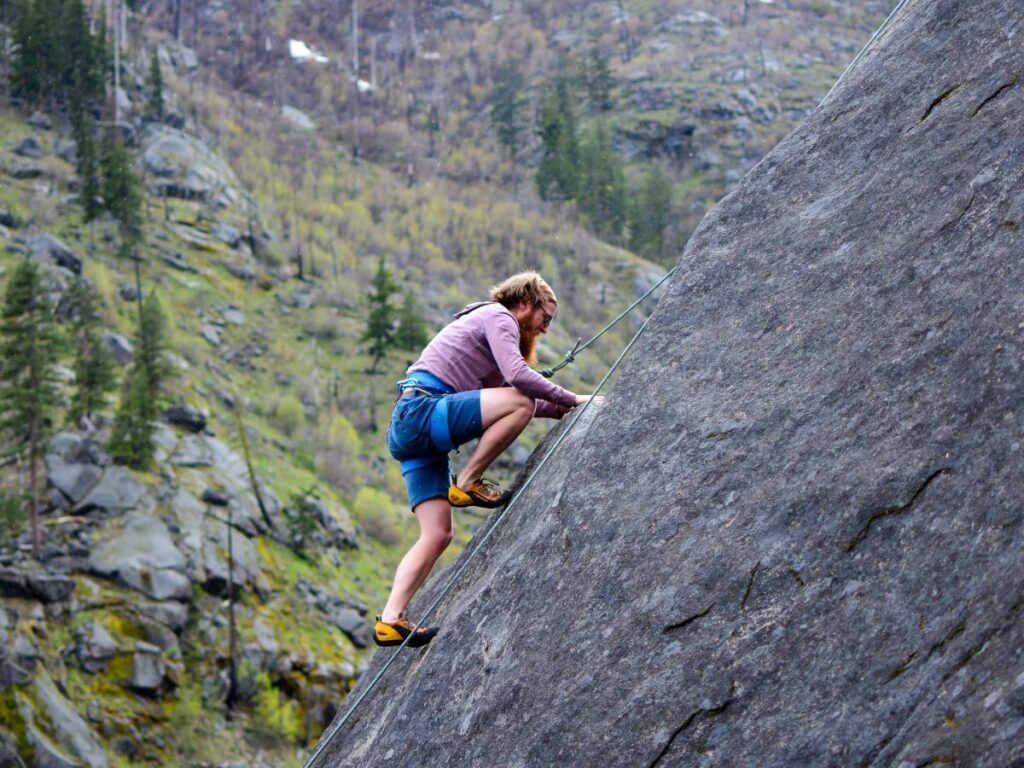Welcome to the majestic Yosemite Valley, a climber’s paradise where the call of adventure echoes off granite cliffs. Whether you’re a seasoned climber or just dipping your toes into the world of rock climbing in Yosemite, this iconic destination offers an unparalleled experience. Imagine ascending the legendary El Capitan or conquering the challenges of Half Dome. With its breathtaking landscapes and diverse routes, climbing in Yosemite Valley is not just an activity, it’s a journey into the heart of nature’s grandeur. In this comprehensive guide, we will share essential tips and insights to help you embrace the thrilling experience of Yosemite rock climbing. From gearing up with the right climbing gear to navigating the variety of routes suitable for all skill levels, including climbing for beginners, we’ve got you covered. Stay with us as we unveil the secrets to making your climb in Yosemite not just a climb, but an unforgettable adventure.
Understanding Yosemite’s Climbing Landscape
Yosemite National Park, renowned for its spectacular natural beauty, is a mecca for climbers worldwide. The park’s unique geography features some of the most iconic and challenging rock formations, making climbing in Yosemite Valley an experience like no other.
The heart of Yosemite’s climbing scene is its impressive granite cliffs, formed over millions of years through geological processes. These sheer walls, such as the famous El Capitan and Half Dome, are not just visually stunning but offer a variety of routes that cater to different levels of climbing expertise. The granite surfaces in Yosemite, known for their solid quality and grip, provide an ideal surface for rock climbing in Yosemite.
The verticality of Yosemite’s cliffs presents both opportunities and challenges for climbers. Routes vary from short, accessible climbs perfect for beginners to multi-day ascents that challenge even the most experienced climbers. The Nose on El Capitan, for instance, is a world-renowned route that has been a testing ground for climbing techniques and gear.
Yosemite rock climbing is also characterized by its crack climbing opportunities. The park’s unique geology has created an array of crack systems, ranging from thin finger cracks to wide off-widths, offering a diverse climbing experience. These cracks not only test physical strength and technique but also mental fortitude.
Weather plays a significant role in the climbing experience in Yosemite Valley. The climbing season typically peaks from late spring to early fall, with conditions varying greatly across seasons. Climbers must be prepared for sudden weather changes and plan their climbs accordingly.
The park’s diverse terrain, from its towering granite formations to its intricate crack systems, presents climbers with a playground of challenges and adventures. Whether you’re just starting out in climbing for beginners or you’re a seasoned pro, the climbing in Yosemite Valley offers something for everyone, making it a bucket-list destination for rock climbing enthusiasts around the globe.

Preparation for Climbing in Yosemite
Embarking on a climbing adventure in Yosemite Valley requires thorough preparation, both in terms of gear and personal readiness. Here’s how you can gear up and mentally prepare for an unforgettable rock climbing experience in Yosemite.
Essential Climbing Gear for Yosemite
Before you set foot on Yosemite’s granite cliffs, ensuring you have the right climbing gear is crucial. Your gear list should include:
- Climbing Harness: Essential for all types of climbing.
- Climbing Shoes: Choose ones that offer a balance of comfort and precision.
- Helmet: A must for protecting against falling debris.
- Ropes and Carabiners: Dependable climbing ropes and carabiners suitable for the specific type of climb.
- Protection Gear: This includes cams, nuts, and slings for securing your route.
- Chalk and Chalk Bag: To keep your hands dry for a better grip.
- Belay Device: Essential for rope management and safety.
- For those specifically interested in crack climbing in Yosemite, consider adding tape and climbing gloves to protect your hands.
Physical and Mental Preparation Tips
Climbing in Yosemite Valley is as much a mental challenge as it is a physical one. Physically, focus on building your endurance, strength, and flexibility. Activities like jogging, yoga, and indoor climbing can greatly enhance your physical preparedness. Mentally, familiarize yourself with the routes and their challenges. Visualization techniques and mindfulness can help in building mental resilience, which is crucial for tackling the unpredictability of rock climbing in Yosemite.
Climbing for Beginners: How to Get Started
For beginners, Yosemite offers a range of routes that are perfect for learning and honing your skills. Start with shorter, less challenging climbs and gradually build up to more difficult routes. Joining a climbing course or hiring a guide can be invaluable for gaining essential climbing skills and understanding the nuances of climbing in Yosemite Valley. Remember, patience and steady progression are key to a successful and enjoyable climbing journey.
Climbing Routes and Difficulty Levels
Yosemite Valley, a haven for climbers, offers a plethora of routes that cater to all skill levels, making rock climbing in Yosemite an inclusive experience for everyone from beginners to seasoned experts.
Popular Climbing Routes in Yosemite Valley
Yosemite is home to some of the most iconic climbing routes in the world. For beginners, Swan Slab and Sunnyside Bench are excellent starting points, offering shorter routes with lower difficulty levels. Intermediate climbers often gravitate towards climbs like the Royal Arches or the East Buttress of Middle Cathedral, which offer a good mix of challenge and manageability. For the expert climbers, Yosemite presents legendary challenges like The Nose and The Salathé Wall on El Capitan. These routes are not only physically demanding but also require advanced technical skills and mental fortitude. Another noteworthy mention is the Regular Northwest Face of Half Dome, a must-do for any serious climber.
Difficulty Levels: From Beginner to Expert
The difficulty levels in Yosemite range from easy 5th class climbs to the most challenging 5.14 grades. Beginners should focus on routes rated 5.5 to 5.8, where they can practice basic techniques and build confidence. Intermediate routes, rated between 5.9 and 5.11, involve more technical movements and require better endurance. Expert routes, typically rated 5.12 and above, demand not only advanced climbing skills but also thorough planning and preparation. These routes often feature overhangs, intricate crack systems, and require precise gear placement.
Rock Climbing in Yosemite for All Skill Levels
Yosemite rock climbing is unique in that it offers a comprehensive climbing experience for all levels. Beginners can learn and grow in an inspiring environment, while experts can test their limits against some of the most challenging climbs in the world. The diversity of routes in Yosemite Valley ensures that every climber, regardless of their skill level, finds a path that challenges and excites them.

Safety Tips and Best Practices
Safety is paramount when it comes to climbing in Yosemite Valley. Understanding and adhering to safety guidelines ensures not only your well-being but also an enjoyable climbing experience. Here are some essential safety tips and best practices to follow while climbing in Yosemite.
Gear Inspection and Maintenance: Before any climb, thoroughly inspect your climbing gear. Check for any wear and tear in ropes, harnesses, carabiners, and belay devices. Regular maintenance and replacing old or damaged gear are crucial to prevent accidents.
Weather Considerations: Yosemite’s weather can be unpredictable and can change rapidly. Always check the weather forecast before your climb. Be prepared for sudden rain, snow, or temperature changes, especially when climbing in Yosemite Valley, where weather can impact climbing conditions significantly.
Understand Route and Difficulty: Select a route that matches your skill level. Familiarize yourself with the route’s terrain and difficulty beforehand. Utilize guidebooks and online resources to gather as much information as possible about the climb.
Climbing with Partners: Never climb alone. Climbing with a partner or a group not only enhances safety but also adds to the overall experience. Ensure that your climbing partner is experienced or equally informed about the route and safety protocols.
Communication is Key: Effective communication with your climbing partner is essential, especially in areas with limited visibility or high wind conditions. Agree on a set of clear, standard climbing calls to avoid any miscommunication.
Stay Hydrated and Energized: Dehydration and fatigue can lead to serious accidents. Carry enough water and high-energy snacks to stay hydrated and energized throughout your climb.
Emergency Protocols: Be aware of the emergency protocols in Yosemite National Park. Carry a basic first aid kit and know how to use it. Have a plan in case of an emergency, and ensure you know how to contact park rangers if necessary.
Leave No Trace: Adhere to the principles of Leave No Trace. Respect the natural environment and minimize your impact while climbing in Yosemite Valley.
Regular Rests and Breaks: Take regular breaks to rest and assess your physical and mental state. Fatigue can lead to mistakes, so it’s important to listen to your body.
Respect Wildlife and Natural Features: Yosemite is home to diverse wildlife and natural features. Maintain a safe distance from wildlife and avoid altering natural features.
Climbing Ethics and Environmental Responsibility
Climbing in Yosemite Valley is not just about the personal challenge and achievement; it’s also about respecting and preserving the natural beauty and integrity of this iconic landscape. As climbers, it’s essential to adhere to ethical practices and environmental responsibility to ensure that the pristine condition of Yosemite is maintained for future generations.
Minimize Impact: Practice Leave No Trace principles rigorously. This includes packing out all trash, minimizing the use of chalk to reduce visual impact, and avoiding sensitive vegetation and wildlife habitats. Stick to established trails and climbing routes to prevent erosion and damage to the surrounding environment.
Respect Wildlife: Yosemite is teeming with wildlife, and it’s crucial to maintain a respectful distance. Disturbing animals or their habitats can have negative impacts on the ecosystem. Be mindful of nesting birds and other wildlife, especially during sensitive seasons.
Use Established Campsites: When camping in Yosemite Valley, use established campsites. This helps to reduce the impact on the land and keeps the wilderness areas pristine.
Responsible Waste Disposal: Proper disposal of human waste is crucial in preserving the park’s environment. Use designated facilities or carry a portable waste disposal system, especially on longer climbs where facilities may not be available.
Conserve Water Sources: Avoid polluting water sources with soaps, food, or waste. Yosemite’s streams and lakes are vital to the park’s ecosystem and should be kept clean.
Cultural Respect: Respect the cultural heritage of Yosemite. This includes not defacing rock formations or historic climbing routes. Yosemite has a rich history, and preserving it is part of ethical climbing.
Share the Space: Yosemite attracts climbers from all over the world. Be courteous and respectful to fellow climbers. This includes being mindful of noise levels and maintaining a positive atmosphere in the climbing community.
Educate Others: If you see others engaging in harmful practices, educate them politely. Spreading awareness about ethical climbing and environmental responsibility can have a significant impact.

Local Climbing Resources and Guides
Yosemite Valley, with its world-renowned climbing opportunities, is also home to a host of local climbing resources and guides. These services are not just for beginners learning to climb but also for experienced climbers looking to tackle more challenging routes or refine their skills.
Climbing Schools in Yosemite: Yosemite boasts several reputable climbing schools. These schools offer courses ranging from basic climbing techniques and safety for beginners to advanced skills like crack climbing and multi-pitch efficiency. Participating in a course can be a valuable way to gain confidence and competence, especially if you’re new to climbing in Yosemite Valley.
Professional Climbing Guides: Hiring a professional guide can significantly enhance your climbing experience in Yosemite. Guides are not only experts in climbing techniques but also have extensive knowledge of the local geography and conditions. They can tailor your climbing experience to match your skill level and goals, whether it’s conquering a specific route or just enjoying a day of climbing in the beautiful Yosemite scenery.
Customized Climbing Experiences: Many local guides and schools offer customized climbing experiences. This could include focusing on particular techniques, like crack climbing or slab climbing, or guiding you through some of the iconic routes in Yosemite that align with your skill level.
Safety and Local Knowledge: Local guides are invaluable when it comes to safety. They are well-versed in Yosemite’s weather patterns, potential hazards on various routes, and emergency protocols. This knowledge is crucial for a safe and enjoyable climbing experience in Yosemite Valley.
Equipment Rental: For those who do not have their own gear or are unable to bring it, many local climbing schools and guide services offer equipment rental. This includes everything from climbing shoes and harnesses to ropes and protection gear.
Enhancing Your Climbing Skills: Even experienced climbers can benefit from local resources. Guides can offer tips and techniques that are specific to the unique challenges of rock climbing in Yosemite. They can also provide insights into advanced climbing strategies and help fine-tune your skills.
Accommodation and Logistics
For climbers planning a trip to Yosemite Valley, sorting out accommodation and logistics is as crucial as preparing for the climb itself. Here are some suggestions and insights to help you plan your stay and logistics efficiently.
Variety of Accommodation Options: Yosemite offers a range of accommodation options to suit different preferences and budgets. Inside the park, you can find campgrounds, which are ideal for those wanting a closer-to-nature experience. There are also lodges and cabins for those seeking more comfort. Nearby towns also offer hotels and rental homes. Remember, staying inside the park reduces travel time to the climbing sites.
Booking in Advance: Yosemite is a popular destination, especially during the peak climbing seasons of spring and fall. It’s crucial to book your accommodation well in advance to secure your spot. This is particularly important for campgrounds and lodges within Yosemite Valley, which can fill up months ahead.
Consider Proximity to Climbing Sites: When choosing your accommodation, consider its proximity to the climbing sites you plan to visit. Staying close to your chosen climbing areas can save you valuable time and energy, allowing you to maximize your climbing days in Yosemite Valley.
Transportation and Parking: If you’re driving to Yosemite, be aware of the parking facilities near your accommodation and climbing sites. During peak seasons, parking can be challenging, so knowing the parking situation beforehand can help you plan your daily logistics more effectively.
Food and Supplies: Some accommodations offer dining options, but it’s wise to plan for your meals. There are stores within and near the park where you can stock up on groceries and supplies. For climbers spending long days on the routes, packing energy-boosting snacks and sufficient water is essential.
Plan for Non-Climbing Days: Yosemite Valley offers more than just climbing. Plan some rest days or non-climbing activities to enjoy the park’s other attractions, like its hiking trails and waterfalls. This also provides a much-needed break for your muscles to recover.
Familiarize Yourself with Park Regulations: Yosemite National Park has specific regulations, including on camping, wildlife, and fire safety. Familiarize yourself with these rules to ensure a hassle-free stay.

Key Takeaways
- Yosemite Valley offers climbing routes for all skill levels, from beginners to experts, with iconic formations like El Capitan and Half Dome providing a variety of challenges.
- Proper preparation, including having the right climbing gear and physical and mental readiness, is crucial for a safe and enjoyable climbing experience in Yosemite.
- Adherence to safety protocols and best practices, including weather considerations and emergency preparedness, is vital for all climbers in Yosemite Valley.
- Climbers must practice ethical climbing and environmental conservation, respecting wildlife, following Leave No Trace principles, and minimizing their impact on the natural surroundings.
- Utilizing local climbing schools and guides can greatly enhance the climbing experience in Yosemite, offering customized guidance and valuable insights into the park’s unique terrain.
- Early planning for accommodation and logistics, especially during peak seasons, is essential for a hassle-free climbing trip in Yosemite.
- Overall, the article emphasizes the unparalleled experience of climbing in Yosemite Valley, highlighting the importance of preparation, safety, environmental stewardship, and utilizing local resources for an enriching climbing adventure.
FAQs
- What’s the best time of year to go climbing in Yosemite?
The best time for climbing in Yosemite is typically late spring to early fall, with weather conditions being more favorable. - Do I need a permit to climb in Yosemite?
No, you don’t need a special permit for most climbs, but some overnight wilderness climbs require a wilderness permit. - Can beginners climb in Yosemite?
Yes, Yosemite offers routes suitable for beginners, with climbing schools and guides available for instruction. - What are some popular climbing routes for beginners in Yosemite?
Swan Slab and Sunnyside Bench are great beginner-friendly climbing routes in Yosemite. - What kind of wildlife might I encounter while climbing in Yosemite?
Climbers may encounter wildlife like deer, squirrels, and birds; bear sightings are less common but possible. - Is there cell phone service in Yosemite’s climbing areas?
Cell phone service is limited in Yosemite, especially in remote climbing areas. - What are the most challenging climbs in Yosemite?
The Nose on El Capitan and The Salathé Wall are among the most challenging climbs in Yosemite. - What should I do if I encounter bad weather while climbing?
Descend if safe to do so or find shelter and wait out the weather, always prioritize safety. - Can I rent climbing gear in Yosemite?
Yes, there are options for renting climbing gear in and around Yosemite. - How can I minimize my environmental impact while climbing in Yosemite?
Practice Leave No Trace principles, avoid disturbing wildlife, and stick to established trails and routes.
